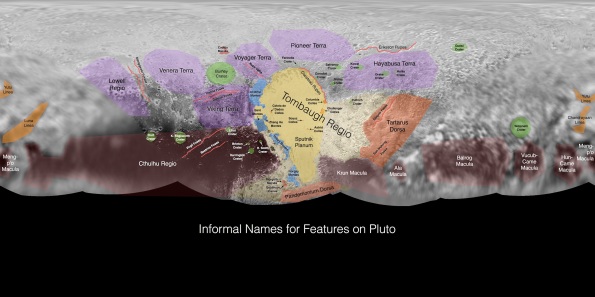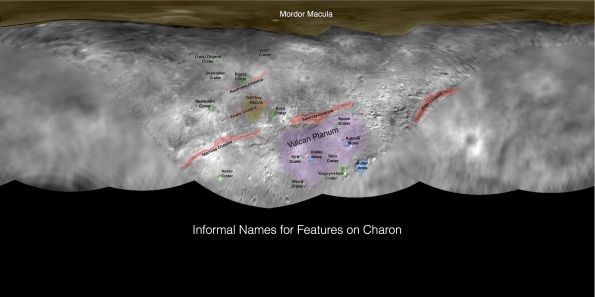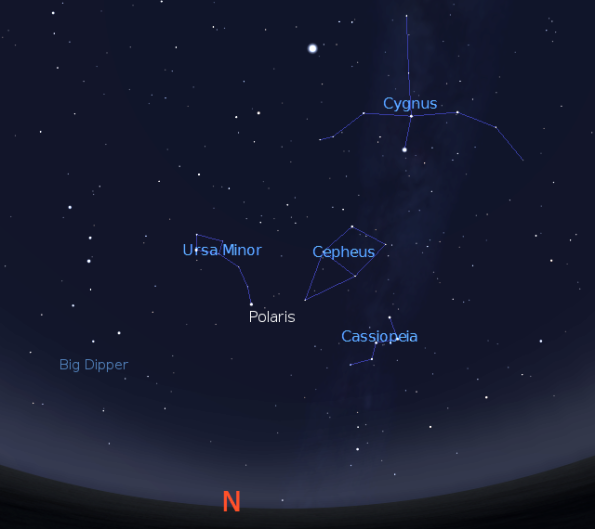Archive
08/31/2015 – Ephemeris – Previewing the skies of September – Part 1
Ephemeris for Monday, August 31st. The Sun will rise at 7:03. It’ll be up for 13 hours and 18 minutes, setting at 8:21. The Moon, 2 days past full, will rise at 9:31 this evening.
Let’s look forward to the skies of September. The sun will moving at its greatest speed in its retreat to the south. Daylight hours in the Interlochen/Traverse City area and will drop from 13 hours and 15 minutes tomorrow the 1st. to 11 hours 46 minutes on the 30th. The altitude of the sun above the southern horizon at local noon will be 54 degrees tomorrow, and will descend to 42 degrees on the 30th. The Straits area will see the sun a degree lower. The season of summer is getting short, so enjoy it while you can. Summer ends and autumn begins at 4:20 a.m. on September 23rd. Saturn is setting before midnight now, but Venus and Mars are appearing in the morning sky soon. Tomorrow we’ll look at September’s lunar eclipse.
Times are for the Traverse City/Interlochen area of Michigan. They may be different for your location
Addendum
The planets and stars are plotted for the 15th at 10 p.m. EDT. That is chart time. Note, Traverse City is located 1 hour 45 minutes behind our time meridian. To duplicate the star positions on a planisphere you may have to set it to 1 hour 45 minutes earlier than the current time.
Evening astronomical twilight ends at 10:04 p.m. EDT on August 1st, decreasing to 9:02 p.m. EDT on the 30th..
Morning astronomical twilight starts at 5:19 a.m. EDT on August 1st, and increasing to 6:01 a.m. EDT on the 30th.
Add a half hour to the chart time every week before the 15th and subtract and hour for every week after the 15th.
For a list of constellation names to go with the abbreviations click here.
The green pointer from the Big Dipper is:
- Pointer stars at the front of the bowl of the Big Dipper point to Polaris the North Star.
- Follow the arc of the Big Dipper’s handle to Arcturus.
- The Summer Triangle is shown in red.
Calendar of Planetary Events
Credit: Sky Events Calendar by Fred Espenak and Sumit Dutta (NASA’s GSFC)
To generate your own calendar go to http://eclipse.gsfc.nasa.gov/SKYCAL/SKYCAL.html
Times are Eastern Daylight Time on a 24 hour clock. Some additions made to aid clarity.
Conjunctions like the Mars-Regulus: 0.8° N means Regulus will appear 0.8° north of Mars.
| Sep | 01 | Tu | Venus: 25° W | |
| 04 | Fr | 05:59 | Mercury Elongation: 27.1° E | |
| 05 | Sa | 01:09 | Moon-Aldebaran: 0.6° S Occultation?* | |
| 05 | Sa | 05:54 | Last Quarter | |
| 06 | Su | 13:06 | Moon North Dec.: 18.2° N | |
| 10 | Th | 01:53 | Moon-Venus: 2.9° S | |
| 13 | Su | 02:41 | New Moon | |
| 13 | Su | 02:55 | Partial Solar Eclipse (Southern tip of Africa to Antarctica) | |
| 14 | Mo | 00:38 | Moon Ascending Node | |
| 14 | Mo | 07:28 | Moon Apogee: 406500 km | |
| 18 | Fr | 22:54 | Moon-Saturn: 3.1° S | |
| 21 | Mo | 04:59 | First Quarter | |
| 21 | Mo | 08:02 | Moon South Dec.: 18.1° S | |
| 23 | We | 04:20 | Autumnal Equinox | |
| 24 | Th | 15:38 | Mars-Regulus: 0.8° N | |
| 27 | Su | 17:04 | Moon Descending Node | |
| 27 | Su | 21:46 | Moon Perigee: 356900 km – Super moon | |
| 27 | Su | 22:48 | Total Lunar Eclipse | |
| 27 | Su | 22:50 | Full Moon – Harvest Moon | |
| 30 | We | 10:36 | Mercury Inferior Conjunction with the Sun | |
| Oct | 01 | Th | Venus: 43.6° W |
* For the Grand Traverse Region the Moon will rise at 12:10 a.m. occulting Aldebaran. Aldebaran will appear at the Moon’s unilluminated top right edge at approximately 12:40 a.m.
Note: All lunar conjunctions in the table above are geocentric. Double check with a program like Stellarium to check on the position of the body with respect to the moon for your location.
08/28/2015 – Ephemeris – The last Friday Night Live of the summer
Ephemeris for Friday, August 28th. The Sun will rise at 7:00. It’ll be up for 13 hours and 26 minutes, setting at 8:27. The Moon, 1 day before full, will set at 6:47 tomorrow morning.
The Grand Traverse Astronomical Society will be at the last Friday Night Live of the year this evening to view the Sun and will stay after if its clear to view the Moon and Saturn in the telescopes. For the Sun members have equipped their telescopes with solar filters to greatly diminish the sun’s light to make it safe to view the bright photosphere of the Sun with it’s sunspots. The society itself has a solar telescope, that not only filters the Sun’s light, but filters the light to isolate the red light of the element hydrogen. The special filter, called an etalon has to be tuned to the exact frequency or wavelength of the hydrogen atoms on the sun which will reveal the layer of gas above the photosphere and the clouds of hydrogen above.
Times are for the Traverse City/Interlochen area of Michigan. They may be different for your location.
Addendum
08/27/2015 – Ephemeris – Thunderstorms can produce sprites pointing upward
Ephemeris for Thursday, August 27th. The Sun will rise at 6:59. It’ll be up for 13 hours and 29 minutes, setting at 8:28. The Moon, 2 days before full, will set at 5:32 tomorrow morning.
Thunderstorms are dangerous, as we experienced with the destruction our area experienced with the August 2nd storm. But beside the lightning, wind, rain, hail and tornadoes thunderstorms also can produce sprites which appear to be electrical discharges extending above the tops of the clouds up to 56 miles. While reported as far back as 1886, they were finally photographed in 1989. They have been photographed many times since from the ground, aircraft and the International Space Station. The images of them that I’ve seen appear to be red in color. However there’s also Blue Jets, Blue Starters, Gigantic Jets and ELVES. Wikipedia describes their appearance, but there appears to be little understanding of them.
Times are for the Traverse City/Interlochen area of Michigan. They may be different for your location.
Addendum
08/26/2015 – Ephemeris – Saturn in the evening and an event at the Traverse Area District Library tonight
Wednesday, August 26th. The Sun rises at 6:57. It’ll be up for 13 hours and 32 minutes, setting at 8:30. The Moon, 3 days before full, will set at 4:21 tomorrow morning.
Lets take a look for the bright planets for this week. Saturn is alone in the evening sky spotted low in the southwestern sky near the bright star Antares to its lower left. It will set at 11:59 p.m. Venus crossed over to the morning sky 10 days ago, and Jupiter is passing conjunction with the Sun today. Mars is now in the morning sky climbing away from the Sun. It’s probably too far away from the Earth and faint to spot in the morning twilight. It will rise at 5 a.m. tomorrow. Venus will rise at 5:50 a.m. Tonight the Grand Traverse Astronomical Society will have a summer star party at the Woodmere branch of the Traverse Area District Library starting at 8 p.m. It starts with exploring the summer night skies with a digital sky, before viewing the real one.
Times are for the Traverse City/Interlochen area of Michigan. They may be different for your location.
Addendum

Saturn as seen in a telescope on August 26, 2015. In small telescopes only Titan of all the moons will be visible. Created using Stellarium.
08/25/2015 – Ephemeris – Waiting for more images from New Horizons
Ephemeris for Tuesday, August 25th. The Sun rises at 6:56. It’ll be up for 13 hours and 35 minutes, setting at 8:32. The Moon, 3 days past first quarter, will set at 3:16 tomorrow morning.
The New Horizons team is downloading data now from all the instruments gathered from the encounter with Pluto, but in mid-September the pictures again will be flowing down to Earth. What was downloaded in the day and a half after close encounter with Pluto were highly compressed images of an area of Pluto and Charon’s surface showing a wider view than we will see later on and in full resolution. The team is already beginning to name the features that can be seen in sufficient detail. The International Astronomical Union has decided the types of names for Pluto, Charon and the rest of the Satellites. Pluto is set aside for explorers, both human and robotic. Charon, for mythical and fictional space and adventure heroes, vessels and authors.
Times are for the Traverse City/Interlochen area of Michigan. They may be different for your location.
Addendum
The International Astronomical Union approves all names of objects off the Earth. Go to either http://www.iau.org or more specifically http://planetarynames.wr.usgs.gov.
08/24/2015 – Ephemeris – The Bay of Rainbows
Ephemeris for Monday, August 24th. The Sun rises at 6:55. It’ll be up for 13 hours and 38 minutes, setting at 8:34. The Moon, 2 days past first quarter, will set at 2:17 tomorrow morning.
One of my favorite lunar formations is creeping into sunlight on the Moon this evening. Look to the upper left edge of the moon tonight. The large sea or dark area of the Moon, the Man in the Moon’s right eye as he’s looking at us is Mare Imbrium, the Sea of Showers. At the top left edge of that sea is a large notch. And keeping with of seas these of the first telescopic astronomers its name is Sinus Iridium, or Bay of Rainbows, a colorful name for something as colorless as the rest of the Moon. The terminator which is the sunrise line will be cutting across that bay, illuminating the semicircular mountain ring that surrounds it before all of the floor is illuminated. It can be seen in binoculars or a small telescope.
Times are for the Traverse City/Interlochen area of Michigan. They may be different for your location.
Addendum

The Moon at 10 p.m. August 24, 2015 showing the location of Sinus Iridium. Created using Virtual Moon Atlas.

The moon at 10 p.m. August 24, 2015 with Sinus Iridium extending into the lunar night. Created using Virtual Moon Atlas.
This is for 2 hr UT August 25, 2015.
08/21/2015 – Ephemeris – Local Grand Traverse astronomy events this weekend
Ephemeris for Friday, August 21st. The Sun rises at 6:51. It’ll be up for 13 hours and 47 minutes, setting at 8:39. The Moon, 1 day before first quarter, will set at 12:03 tomorrow morning.
The Grand Traverse Astronomical Society will be at Friday Night Live again this evening and will stay after if its clear to view the Moon and Saturn in the telescopes. Tomorrow night is another new venue for the society. Members of the society will be at the Kingsley, MI Public Library for a program and viewing of the Moon, Saturn and other objects in the skies. The evening starts at 8 p.m., with a program by yours truly Exploring the Summer and Autumn Skies. This program is an interactive sky program and not a PowerPoint program. There will be displays and free NASA items for the kids. If it’s cloudy I also have a program on the images and information learned so far from New Horizon’s encounter with America’s favorite planet: Pluto.
Times are for the Traverse City/Interlochen area of Michigan. They may be different for your location.
Addendum

After Friday Night Live was over last Friday Saturn was visible until about 11 p.m. Credit: Bob Moler.
08/20/2015 – Ephemeris – Library Lending Telescopes
Ephemeris for Thursday, August 20th. The Sun rises at 6:50. It’ll be up for 13 hours and 50 minutes, setting at 8:40. The Moon, 2 days before first quarter, will set at 11:30 this evening.
The Moon has always been a favorite target for binoculars and telescopes. Tonight is no exception. The trouble is that most inexpensive telescopes are overly complicated and hard to use. One way to help the prospective telescope buyer is to try one and get used to a telescope before plunking down money for it. In that regard The Grand Traverse Astronomical Society (GTAS) and Enerdyne of Suttons Bay have donated a telescope to the Traverse Area District Library and The Betsie Valley District Library. The library’s themselves will determine how the telescopes will be lent out. The first two telescopes are Orion StarMax 90mm TableTop telescopes, suitable for viewing the Moon and planets Saturn, Jupiter, Venus and Mars.
Times are for the Traverse City/Interlochen area of Michigan. They may be different for your location.
Addendum

A youngster trying to see where the telescope is pointing at the star party at The Betsie Valley District Library, Thompsonville, MI. Credit: Library staff.
The Traverse Area District Library will host an event inaugurating the use of their telescope on Wednesday night August 26th starting at 8 p.m.
08/19/2015 – Ephemeris – Saturn’s in the evening, but say “Good morning” to Mars
Ephemeris for Wednesday, August 19th. The Sun rises at 6:49. It’ll be up for 13 hours and 52 minutes, setting at 8:42. The Moon, 3 days before first quarter, will set at 10:59 this evening.
Lets take a look for the bright planets for this week. Saturn is alone in the evening sky spotted low in the southwestern sky near the bright star Antares to its lower left. It will set at 12:26 a.m. Venus crossed over to the morning sky last Saturday, and Jupiter is too close to the Sun to spot and will follow Venus into the morning sky on the 26th. Mars is now in the morning sky climbing away from the Sun. It’s probably too far away from the Earth and faint to spot in the morning twilight. It will rise tomorrow at 5:03. Venus will move away from the Sun and will rapidly become visible before sunrise by the end of the month. When Venus appears rather suddenly in the morning sky like this it prompts a few UFO reports.
Times are for the Traverse City/Interlochen area of Michigan. They may be different for your location.
Addendum

Saturn and the Moon with southern summer constellations at 10 p.m. on August 19, 2015. Created using Stellarium.

Saturn as seen in a telescope. In small telescopes only Titan of all the moons will be visible. Created using Stellarium.
08/18/2015 – Ephemeris – The autumn queen is rising
Ephemeris for Tuesday, August 18th. The Sun rises at 6:48. It’ll be up for 13 hours and 55 minutes, setting at 8:44. The Moon, half way from new to first quarter, will set at 10:31 this evening.
A look to the northeast at 10 p.m. or later will reveal a letter W pattern of stars. This is the constellation of Cassiopeia the queen. Cassiopeia is so far north that it never sets for us in Michigan. It is opposite the pole star Polaris from the Big Dipper. So as the Big Dipper is rotating down the sky in the northwest, Cassiopeia is rotating up in the northeast. The pivot is the star Polaris, the north star. There’s a dim star that appears above the middle star of the W which turns the W into a very crooked backed chair. Above Cassiopeia is a dim church steeple shaped constellation of Cepheus the king. The Milky Way flows through Cassiopeia and a corner of Cepheus and up through Cygnus, and on to the south.
Times are for the Traverse City/Interlochen area of Michigan. They may be different for your location.













